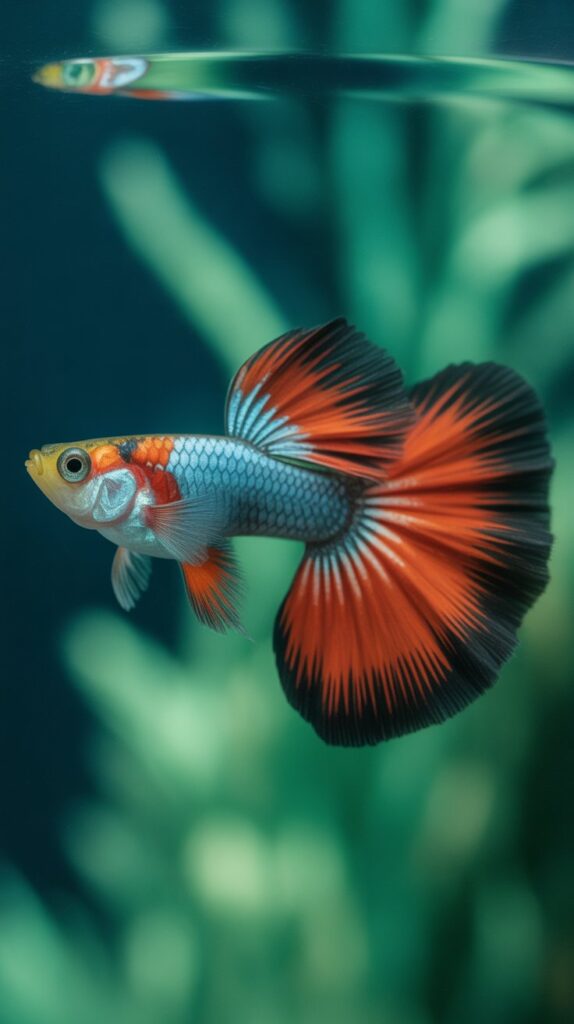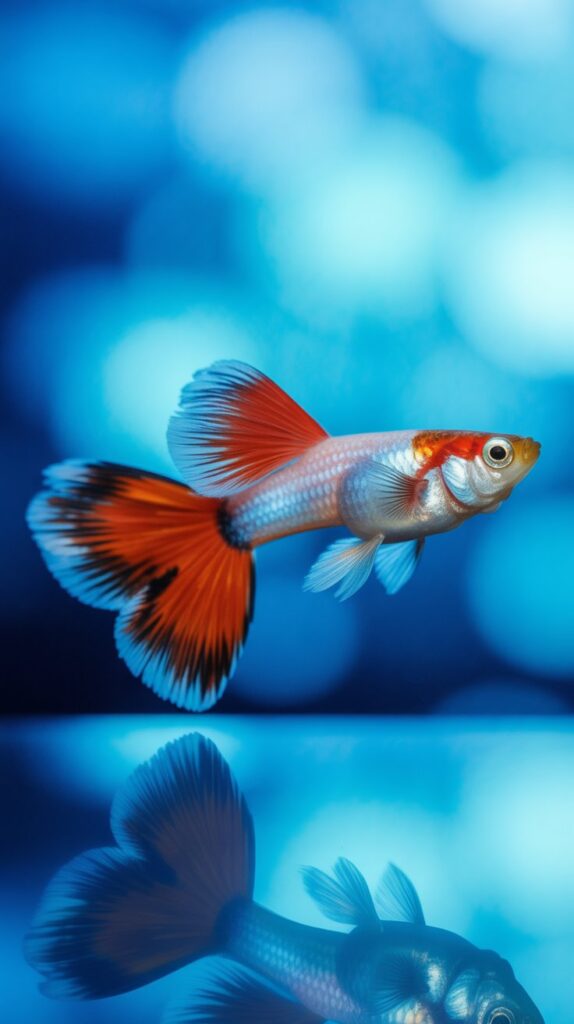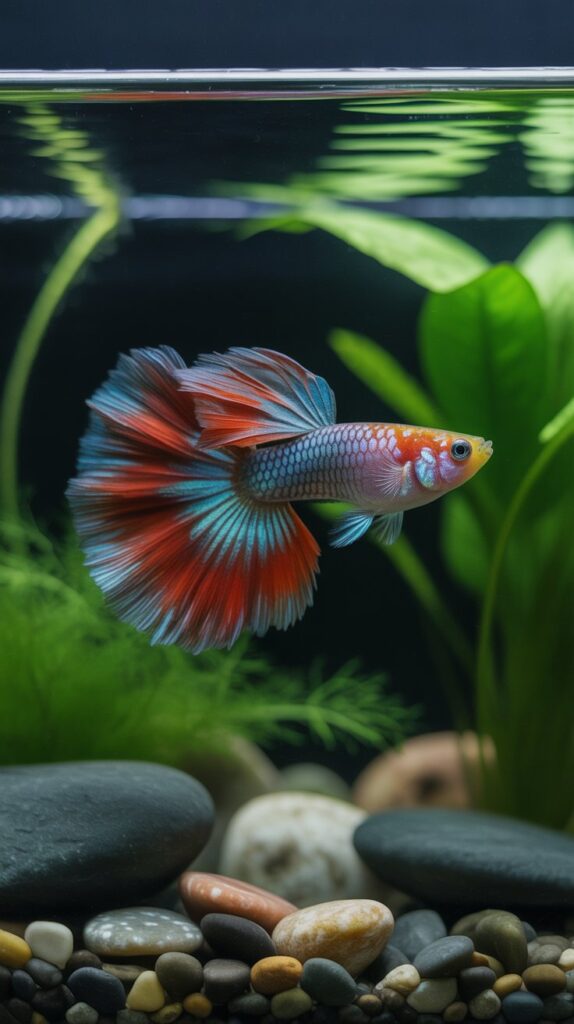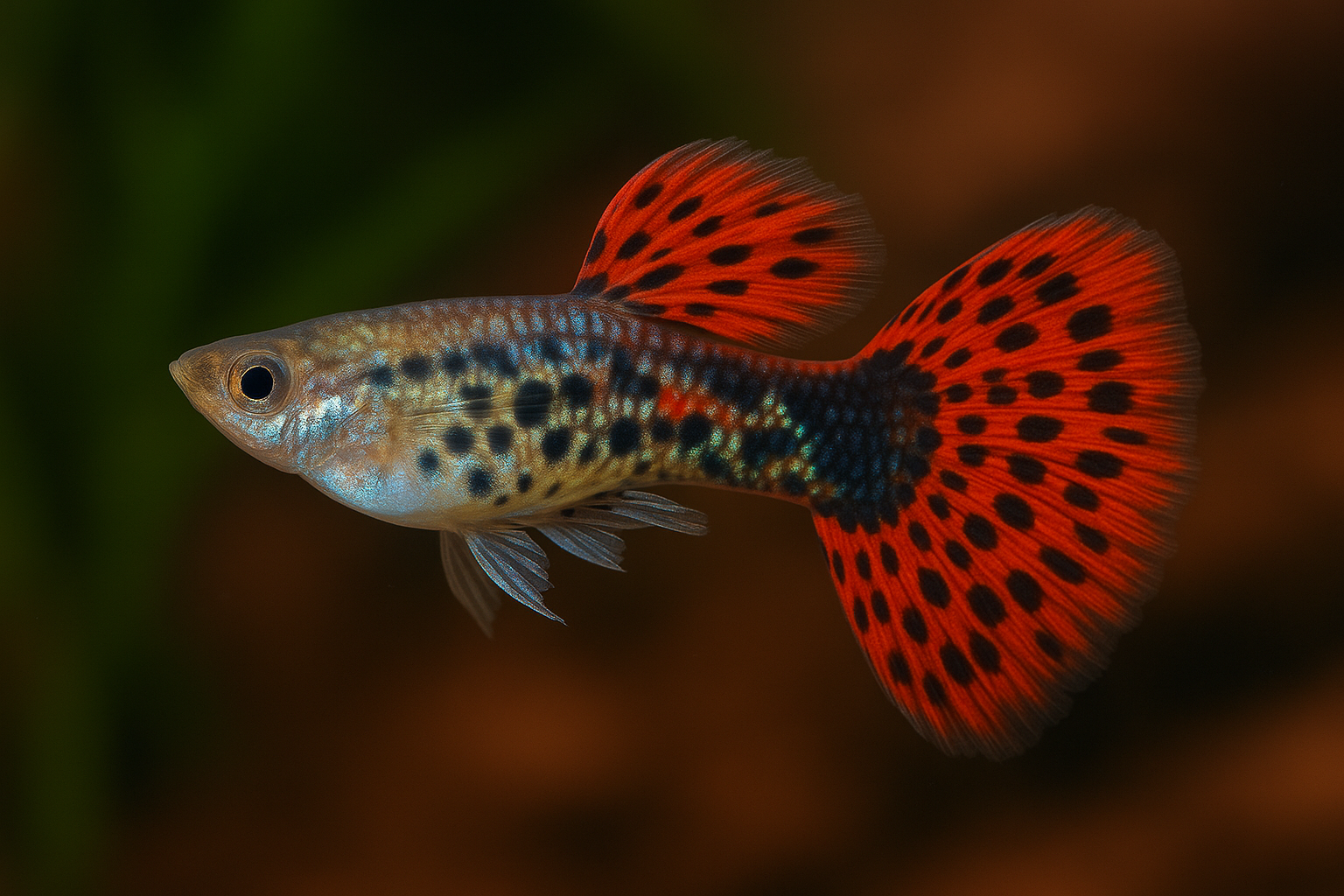The Red Galaxy Guppy is a breathtaking ornamental fish admired for its celestial coloration, radiant red hues, and intricate patterns that resemble a starry night sky. Often featured in aquascapes and competitive guppy shows, this guppy variety is not only a visual treat but also a symbol of elegance in freshwater aquariums. In this guide, we will explore everything from its origin and physical traits to care tips, breeding, feeding, and common questions — giving hobbyists and enthusiasts a complete SEO-optimized and human-readable resource.
1. Origins and Background
The Red Galaxy Guppy is a selectively bred strain of the Poecilia reticulata, a species native to South America. Guppies have long fascinated aquarists for their vibrant colors and easy maintenance. The Red Galaxy strain was developed through meticulous crossbreeding, primarily to emphasize a red dominant base color combined with a star-patterned or “galaxy-like” mosaic on the tail and body.
Key Facts:
- Scientific name: Poecilia reticulata
- Family: Poeciliidae
- Common name: Red Galaxy Guppy
- Lifespan: 2–3 years
- Size: Up to 2.5 inches (6 cm)
2. Physical Appearance

The Red Galaxy Guppy stands out for its fiery red body, often with shimmering metallic accents and mosaic patterns that resemble stars, nebulas, or galaxy spirals on its tail. Males are typically more vibrant and smaller than females.
Distinct Features:
- Body Color: Bright red or crimson base, sometimes with black or blue speckles
- Tail Design: Wide, flowing tail with galaxy mosaic patterns
- Fins: May exhibit Dumbo Ear, Delta, or Ribbon fin types
- Eye Color: Can range from dark to ruby red
These guppies are often the centerpiece in a planted tank due to their intense coloration and active swimming behavior.
3. Tank Requirements
To bring out the full potential of a Red Galaxy Guppy, you need to maintain optimal tank conditions.
Tank Size
- Minimum tank size: 10 gallons for a small group
- Ideal size: 20 gallons or more for community setups
Water Parameters
| Parameter | Ideal Range |
|---|---|
| Temperature | 24°C – 28°C (75°F – 82°F) |
| pH Level | 6.8 – 7.8 |
| Water Hardness | 8 – 12 dGH |
| Ammonia/Nitrites | 0 ppm |
Filtration and Aeration
- Use a gentle sponge filter or hang-on-back filter to maintain water clarity without strong currents.
- Ensure adequate oxygenation using an air stone or surface agitation.
Lighting and Décor
- Moderate lighting enhances coloration.
- Add live plants like guppy grass, java moss, and hornwort.
- Use a dark substrate to make the red colors pop.

4. Diet and Feeding
The Red Galaxy Guppy is an omnivore and thrives on a well-balanced diet that includes both plant and protein sources.
Ideal Diet:
- High-quality flakes or guppy-specific pellets
- Live or frozen foods: Daphnia, brine shrimp, bloodworms
- Vegetables: Blanched spinach, peas
Feeding Tips:
- Feed small amounts 2–3 times daily.
- Avoid overfeeding, as it can cause bloating and water pollution.
5. Behavior and Temperament
Red Galaxy Guppies are peaceful, active swimmers that do well in community tanks. Their social nature makes them ideal for aquariums with other non-aggressive fish like tetras, mollies, and Corydoras.
Avoid:
- Fin-nippers like barbs
- Large aggressive fish such as cichlids
Their playful behavior and vivid coloration add motion and life to any tank environment.
6. Breeding the Red Galaxy Guppy

One of the major attractions of guppies is their ease of breeding. Red Galaxy Guppies are livebearers, meaning they give birth to free-swimming fry rather than laying eggs.
Breeding Steps:
- Select healthy breeders – Choose a vibrant male and female with desired traits.
- Set up a breeding tank – Use a separate tank with hiding spots (plants, breeding boxes).
- Gestation Period: 21–30 days
- Number of Fry: 20–60 per birth
Fry Care:
- Feed powdered fry food or baby brine shrimp.
- Keep them in a separate tank to avoid being eaten by adults.
- Maintain stable temperature and water quality.
Breeding Red Galaxy Guppies can also be a way to selectively enhance the galaxy pattern in future generations.
7. Common Health Issues
While guppies are generally hardy, poor water quality and diet can lead to health problems.
Common Diseases:
- Fin rot: Caused by poor water conditions; treat with antibacterial medication.
- Ich (white spot): Treated with temperature increase and aquarium salt.
- Swim bladder disorder: Often due to overfeeding or poor nutrition.
Preventive Tips:
- Regular water changes (25–30% weekly)
- Quarantine new fish before adding them to the main tank
- Avoid overcrowding
8. Why Choose Red Galaxy Guppies?

There are several reasons why this guppy strain is a favorite among hobbyists:
- Dazzling red and galaxy-like patterns
- Visually dominant in community aquariums
Easy Maintenance
- Suitable for beginners and seasoned aquarists alike
- Hardy and adaptable
Breeding Potential
- Reproduce easily
- Opportunity to develop your own strain
9. Tips for Enhancing Color
To make your Red Galaxy Guppies more vivid:
- Use a high-protein diet including live foods
- Maintain stable lighting (8–10 hours/day)
- Keep stress low by avoiding aggressive tank mates
- Use a dark substrate or background to make reds pop
10. Price and Availability
Red Galaxy Guppies are available from online breeders, pet stores, and aquascaping events.
| Quality | Price Range (USD) |
|---|---|
| Standard | $3 – $8 per fish |
| Show Grade | $10 – $25 per fish |
| Breeding Pair | $20 – $40 |
Always purchase from reputable breeders to ensure healthy, high-quality stock.
Frequently Asked Questions (FAQs)
Q1: Are Red Galaxy Guppies suitable for beginners?
Yes! They are easy to care for and are perfect for beginners who want a stunning and low-maintenance fish.
Q2: How often do Red Galaxy Guppies breed?
Females can give birth every 4–6 weeks if a male is present. They store sperm and can give birth multiple times from a single mating.
Q3: Can I keep Red Galaxy Guppies with shrimp?
Yes, guppies generally coexist peacefully with shrimp like cherry or Amano shrimp, though baby shrimp may be at risk.
Q4: How do I improve the red coloration?
Feed color-enhancing foods like bloodworms, maintain optimal water conditions, and provide proper lighting.
Q5: What’s the difference between Red Galaxy and Red Mosaic Guppies?
Red Galaxy Guppies feature a more scattered or starry pattern, while Red Mosaic Guppies have symmetrical tail patterns resembling stained glass.
Q6: Do Red Galaxy Guppies need a heater?
Yes, especially if room temperature drops below 24°C (75°F). Consistent temperature ensures better health and breeding performance.
Q7: How many Red Galaxy Guppies should I keep together?
A group of 6 or more is ideal for social interaction and visual impact. Keep a male-to-female ratio of 1:2 to prevent harassment.
Conclusion
The Red Galaxy Guppy is more than just a beautiful fish—it’s a cosmic display in your aquarium. With its rich red coloration and star-speckled patterns, this guppy is a standout in any freshwater setup. Whether you’re a beginner or an experienced breeder, Red Galaxy Guppies offer a rewarding and visually stunning fishkeeping experience.
From proper tank care and breeding techniques to enhancing coloration and ensuring compatibility, this complete guide has everything you need to become a successful Red Galaxy Guppy keeper.

